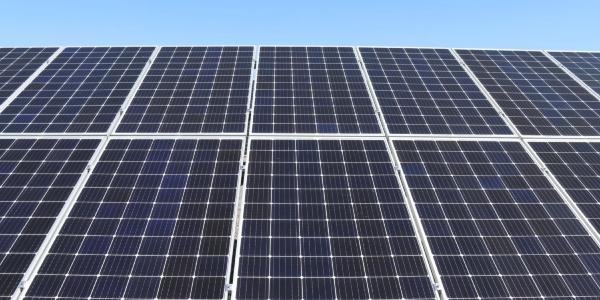Optimize customer solar potential

By Anna Lockhart.
Make the most of your sales efforts and win more jobs with solar offerings.
Looking to expand your roofing business’s profits and venture into an adjacent industry? Solar energy is rapidly picking up pace in popularity, and many homeowners aren’t aware of their home’s great solar potential. From the experts behind projects like EagleView Assess, this guide offers great advice for contractors looking to help homeowners on their solar journey!
Assessing the solar potential of homes
In the solar industry, accurate production calculations are absolutely crucial. They’re the backbone of any successful solar project, ensuring that everything from system design to performance projections is on point. Think of them as the GPS for your solar journey – without accurate calculations, you might end up going in the wrong direction.
Why is accuracy so important? Well, for starters, it’s all about maximizing energy output. With precise calculations, we can design solar systems that harness the maximum amount of sunlight available, optimizing energy production and ultimately saving customers money on their electricity bills. Plus, accurate calculations help us avoid costly mistakes down the line. Imagine installing a system only to realize later that it’s not performing as expected – that’s a headache no one wants to deal with.
But it’s not just about the numbers – accurate production calculations also instill confidence. When customers know that their solar system has been meticulously designed and calculated, they can trust that it will deliver the results promised. It’s all about setting realistic expectations and ensuring that everyone involved is on the same page.
The importance of having accurate production calculations
Assessing the solar potential of homes is a crucial step in the solar journey, and it’s about more than just throwing panels on the roof and hoping for the best. It’s about understanding the unique characteristics of each home – from its location and orientation to its roof size and shading – to determine how much sunlight it receives throughout the day. This assessment helps us identify the optimal placement for solar panels and predict how much energy the system will produce.
One of the key factors we consider when assessing solar potential is the roof’s orientation and tilt. Ideally, in North America, we want the roof to face south and have a slope that maximizes exposure to the sun throughout the day. Additionally, we take into account any shading from nearby trees, buildings or other obstructions that could reduce solar output. By analyzing these factors, we can accurately estimate the solar potential of a home and design a system that meets the homeowner’s needs while maximizing energy production.
Proper shade analysis
Proper shade analysis is essential in ensuring the optimal performance of solar energy systems and maximizing return on investment. Shade can significantly impact the efficiency of solar panels, so it’s crucial to accurately assess and mitigate its effects. When conducting shade analyses, considering factors such as the sun’s trajectory throughout the day, nearby obstructions like trees and buildings, and seasonal variations in shade patterns is important.
Conducting thorough shade analyses allows you to identify potential shading issues before installation begins and develop strategies to minimize their impact. This might involve adjusting the placement of solar panels or trimming trees to optimize sunlight exposure. Additionally, using software tools to simulate shade patterns and predict their effect on energy production allows you to design solar systems that maximize efficiency and minimize losses.
Introducing SolarReady™
Introducing SolarReady, our latest tool designed to seamlessly integrate solar data into every aspect of your workflow.
- Prospect like a pro: Identify homes with existing solar panel coverage, assess market potential and pinpoint target properties based on their solar viability. With SolarReady, generate custom visualizations and data to bolster your sales pitch and secure more leads.
- Optimize sales efforts: Focus your sales and marketing strategies on qualified leads and optimize resource allocation. SolarReady enables you to swiftly generate proposals, empowering homeowners to visualize their solar potential with ease.
- Win more jobs: Impress clients with compelling visualizations and precise production estimates. Customize SolarReady to align with your design preferences and profit goals, ensuring you win more contracts and maximize your earnings.
Use SolarReady to create more efficient sales methods and remove the guessing game around which homes are suitable for solar. Tailor SolarReady to your specifications and deliver prompt, accurate proposals to propel your solar business forward.
Original article source: EagleView
Learn more about EagleView Assess in their Coffee Shop directory or visit www.eagleview.com.
About Anna
Anna Lockhart is a content administrator/writer for the Coffee Shops and AskARoofer™. When she’s not working, she’s most likely to be found with her nose in a book or attempting to master a new cookie recipe.























Comments
Leave a Reply
Have an account? Login to leave a comment!
Sign In